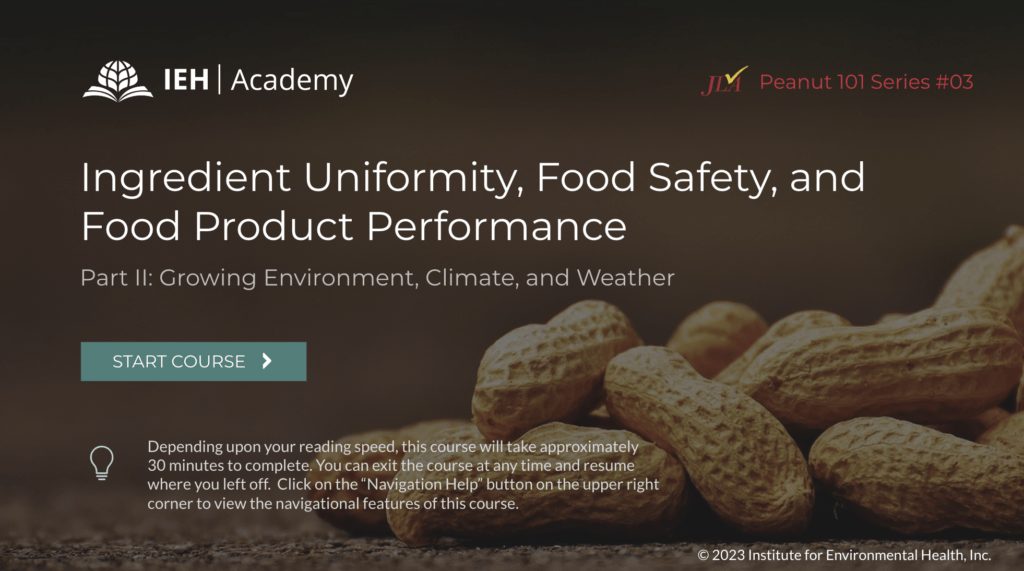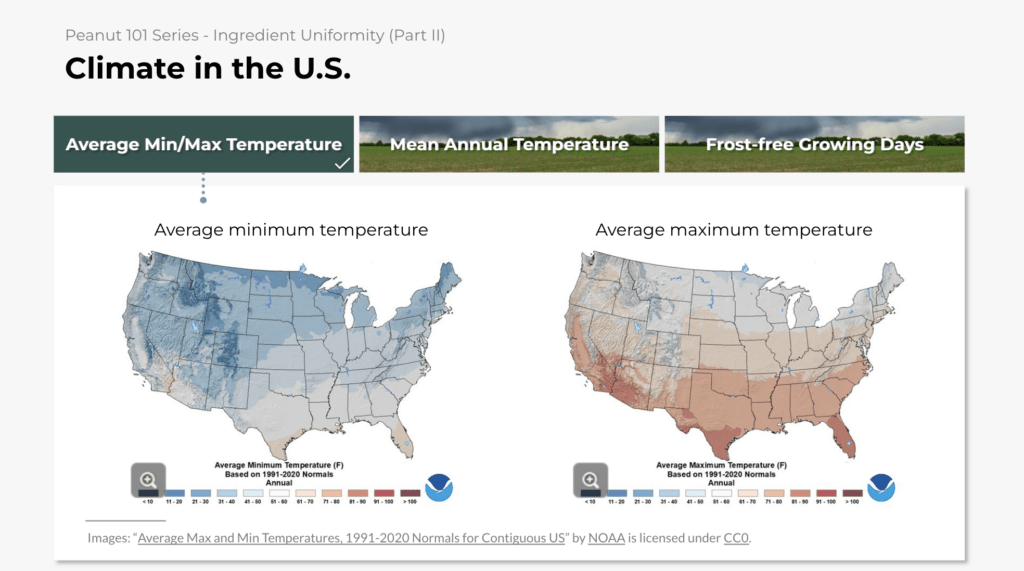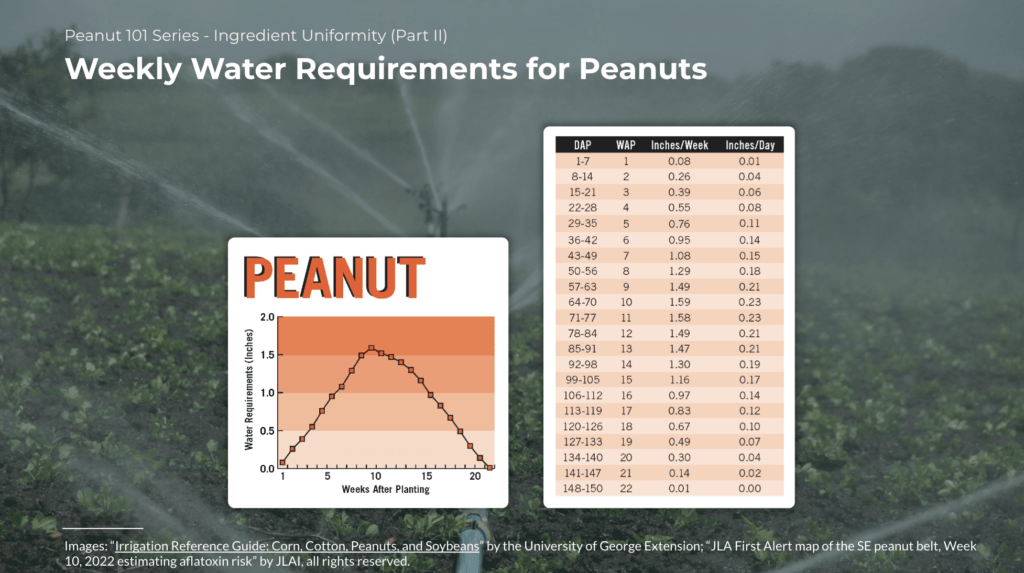In this course, we continue our focus on ingredient uniformity and how it leads to food safety and food product performance, specifically addressing growing environment, climate and weather.
Manufacturing efficiency and effectiveness are enhanced by ingredient uniformity. Yet in food processing, ingredients are never perfectly consistent. In the production of salted nuts, peanut butter, peanut candies and other peanut products, the biological nature of peanuts lends itself to variations in ingredient uniformity. Each peanut manufacturing sector has its own sensitivities to different aspects of “consistency” in incoming materials. For example, confectioners are sensitive to kernel size and oleic acid levels, shell color is critical to inshell Virginia and Valencia markets, and total fat is important in peanut butter manufacturing. Nonetheless, no manufacturer tolerates inconsistencies with aflatoxin. Aflatoxin, a toxic metabolite produced by select fungi, particularly Aspergillus flavus, under certain environmental conditions can contaminate peanuts at various stages in the supply chain (For more information, see the IEH Academy eLearning course – Mycotoxins: Aflatoxin Overview).




To register for this course, please visit our training portal.

Dr. Foy D. Mills, Jr. is Vice-President of Ag Systems for JLA International (JLA). Dr. Mills has served the US and international peanut industry for over three decades, first as an Assistant Professor and Extension Ag Economist at the University of Georgia (UGA) from 1987-1989, and since 1991, in various research, education, and leadership roles within JLA including writing for and editing, In a Nutshell, the JLA crop newsletter.
Dr. Mills now provides full-time support to the peanut industry after concluding a 41-year career in US higher education in 2022. He began his work as a professional educator as an instructor of agriculture at Lubbock Christian University (LCU), followed by stints at Texas Tech University as a USDA-ARS National Needs Fellow, UGA as previously noted, Abilene Christian University where he rose to Professor of Agribusiness and Department Chair, Sam Houston State University where he served as Professor and Agribusiness Program Leader, and finally as Provost and Chief Academic Officer at LCU. During his professional career, he was able to establish a seamless relationship between industry and academics, thereby enhancing student engagement. His work with students was recognized with five different national excellence in teaching awards and two distinguished educator awards.
Dr. Mills was raised in the small farming community of Anton, Texas, where his family were cotton farmers. He earned a B.S. in Agribusiness with honors from LCU in 1980. He completed the M.S. in 1983 and the Ph.D. in 1987 in Agricultural Economics at Texas Tech University.

David DeShazo is the Director of Agricultural Services for JLA International (JLA). David joined JLA International over eleven years ago and currently works in Texas servicing JLA labs in Brownfield, TX and DeLeon, TX after starting out his JLA career in the Albany, Georgia facility, headquarters for JLA International. David graduated from Georgia Southern University in 2003 with a Bachelor’s of Science in Biology with an emphasis in plant biology and botany. After graduation, David began his career working for a high-end landscape company. After this eight-year career in landscaping, David decided to return to his home in South Georgia and roots in agriculture. David grew up working a family farm in Worth County, Georgia, where he learned many sectors of agriculture and agribusiness first hand. His combined efforts in agriculture and studies in plant biology have allowed him to grow within the peanut industry.